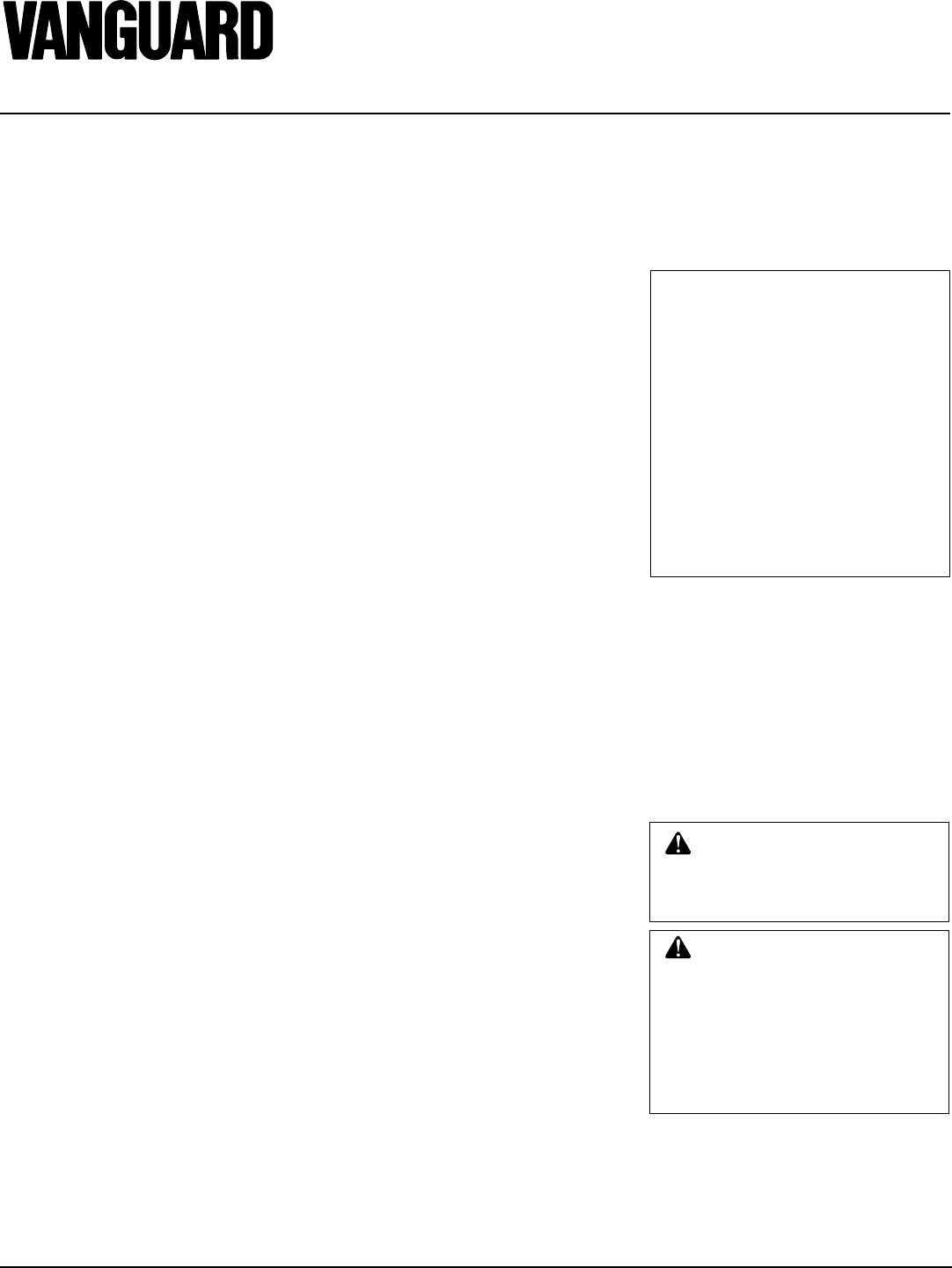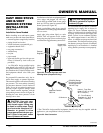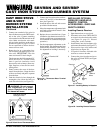
12
®
CAST IRON STOVE AND BURNER SYSTEM
106707
For more information, visit www.desatech.com
SBVRBN AND SBVRBP
CAST IRON STOVE
AND B-VENT
BURNER SYSTEM
INSTALLATION
INSTALLING GAS PIPING TO
STOVE LOCATION
WARNING: A qualified in-
staller or service person must
connect burner system to gas
supply. Follow all local codes.
CAUTION: For propane/LP
units, never connect burner sys-
tem directly to the propane/LP
supply. This burner system re-
quires an external regulator (not
supplied). Install the external regu-
lator between the burner system
and propane/LP supply.
CHECK GAS TYPE
Use proper gas type for the burner system
unit you are installing. If you have conflict-
ing gas types, do not install burner system.
See dealer where you purchased the stove
and burner system for proper burner system
according to your gas type.
NOTICE: This burner system is
intended for use as supplemen-
tal heat. Use this burner system
along with your primary heating
system. Do not install this stove
and burner system as your pri-
mary heat source. If you have a
central heating system, you may
run system’s circulating blower
while using heater. This will help
circulate the heat throughout the
house. In the event of a power
outage, you can use this burner
system as your primary heat
source.
TROUBLESHOOTING
VENTING
PROBLEMS
Most venting problems are caused by incor-
rect vent sizing, improper installation, or
inadequate air supply. A preliminary check
for a field problem might include:
• Using a draft meter to determine if
venting system draft meets
manufacturer’s specifications
• Checking the vent sizing according to
manufacturer’s specifications, appliance
input, and venting configuration
• Examining the entire venting system for
faults such as disconnected joints for
damaged vent sections
• Making sure vent and air openings are
not obstructed
If these procedures do not reveal the source of
the problem, troubleshooting may include
attention to common venting problems.
FLUE GAS SPILLAGE
Spillage occurs when flue gases cannot exit
the vent system and back up into the dwell-
ing. A primary symptom of appliances
equipped with a Vent Safety Shutoff System
(flue spill switch) is unexplained appliance
shutoffs. Other symptoms of flue gas spillage
at the draft hood include condensation on
walls and windows and/or noticeable odors.
Spillage may also result in the release of
carbon monoxide, a colorless, odorless, highly
toxic gas. A simple spillage test can be con-
ducted if spillage is suspected. See Checking
Gas Connection, pages 14 and 15.
CAUSES OF SPILLAGE AND
CORRECTIVE ACTION
Incorrect Vent Sizing
If the vent is too small or too short, spillage
may occur. If the vent is too large, excessive
dilution air may cool flue gases and reduce
draft, causing spillage. The vent cap size
should also be checked. Check
manufacturer’s instructions, appliance in-
put rating, and appropriate sizing tables.
Venting Condition
Loose joints can affect draft and cause spill-
age. “Mashed” vent sections and damaged
vent caps can restrict flow and cause spill-
age. Examine and replace as needed.
Obstructions
Small animals or birds may get into and block
the vent or draft hood outlet. Dust, lint, and
foreign objects may obstruct air inlets. Re-
move obstructions and clean openings.
Lateral Run
Lengthy hoizontal or non-vertical runs cause
resistance to flow and may reduce draft
enough to cause spillage. The pitch of lat-
eral runs can also be a problem; lateral runs
should be pitched 1/4" rise per foot of hori-
zontal run from the appliance to the vent.
Elbows
Too many elbows cause excessive restric-
tion of flow and may result in spillage.
Usually, two 90º turns can be tolerated in a
properly sized venting system. More than
two may cause problems and necessitate
changing the system.
Negative Pressure in the
Dwelling
An extremely tight house may not supply
adequate combustion and venting air. Use
of mechanical exhaust such as a dryer vent
or range vent may worsen the problem. An
air exchange system must be installed in the
dwelling to correct this problem.
Flue Gas Cooling
Venting exposed to extremely cold tem-
peratures or venting of single wall construc-
tion loses heat needed to maintain draft;
massive masonry chimneys absorb needed
heat. If the flue gases cool excessively, draft
is reduced and spillage may result. Use
proper materials, insulate and protect prop-
erly, reline when necessary.
Down Drafts
In certain wind conditions and in certain
relationships with nearby structures and
objects, high pressure conditions may affect
draft negatively. Relocate the vent cap, raise
its height, or use an approved high wind cap.


















